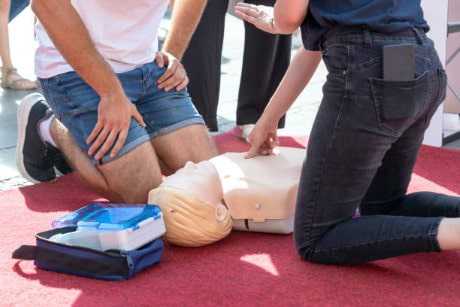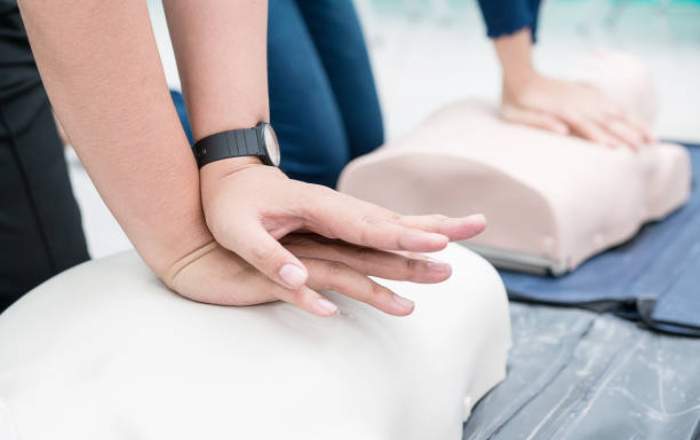CPR training is a necessity for healthcare professionals. It helps them remain calm in high-stress situations and provides them with the skills they need to save a life outside of the hospital.
While CPR isn’t a guarantee of survival, it doubles a victim’s chances of survival. It bridges the gap until more advanced medical care arrives.
Saves Lives

CPR is more than chest compressions and rescue breaths, it’s a symphony of science and intuition, the perfect ensemble of human instinct and medical knowledge. It’s the shield we can all carry against one of the leading causes of death worldwide, a bridge that buys time until emergency medical help arrives.
When someone experiences sudden cardiac arrest, they stop breathing and lose oxygen-rich blood flow within 15 seconds. If no treatment is administered, irreversible brain damage can occur within four minutes. CPR can keep oxygen-rich blood flowing to the brain until emergency medical help can restore a normal heart rhythm.
But for every minute that passes without action, a victim’s chance of survival drops 10%. That’s why Ottawa first aid cpr training is so important. It gives people the skills and confidence to act when it matters most and save lives. You can find classes offered on weekdays and weekends in a variety of formats. You can even find courses tailored to meet the needs of certain groups, such as school-age children or those with specific medical conditions that make them vulnerable to cardiac emergencies.
Prevents Brain Damage
Cardiopulmonary Resuscitation, better known as CPR, is a simple emergency medical procedure that can greatly increase a victim’s chance of survival until paramedics arrive. It involves combining rescue breathing and chest compression in an attempt to reverse cardiac arrest, though it may not always succeed. While it is not a sure-fire way to restart the heart, it does help keep blood flowing and deliver oxygen to vital organs which can reduce the likelihood of brain damage or death. Studies have shown that between four and six minutes passes without oxygen before permanent cell and tissue damage begins.
Bystanders can make the difference between life and death for victims of sudden cardiac arrest outside of a hospital. Performing CPR by calling 911 immediately, starting chest compressions and mouth to mouth resuscitation increments, and using an automated external defibrillator (AED) can prevent brain damage and give paramedics valuable information about the time that has passed since the victim collapsed.
Prevents Sudden Cardiac Arrest

Sudden Cardiac Arrest (SCA) happens when the heart suddenly stops beating. Without oxygen-rich blood, brain damage occurs quickly and death results if not treated within minutes.
CPR can help prevent SCA from happening in the first place by increasing the flow of blood to the heart and lungs. It can also prevent the damage caused by the shock from a defibrillator (AED).
A person who experiences a sudden cardiac arrest needs immediate medical attention. If a witness sees someone collapse, call 911 and start doing CPR. The more people there are to perform CPR, the higher the victim’s chance of survival.
In addition to calling for help and performing chest compressions, a witness should check the victim’s airway and give rescue breaths if they have been trained in full CPR (chest compressions with mouth-to-mouth resuscitation). For untrained bystanders, the current recommendation is “hands-only” CPR which does not include mouth-to-mouth breathing. AEDs are available in many public places and the latest CPR guidelines recommend using them for adult victims of a cardiac arrest.
Prevents Death
CPR is the only thing that can keep a person alive and moving toward recovery when they suffer a cardiac arrest. About 9 out of 10 people who experience cardiac arrest outside the hospital die, and most don’t receive any help from bystanders. CPR keeps blood and oxygen flowing through the body, which is essential for keeping vital organs alive and preventing permanent damage.
Resuscitation also involves opening the airway and using an automated external defibrillator (AED), if available, to shock the victim’s heart back into a normal rhythm. This is critical because about half of all cardiac arrests happen outside the hospital.
Conlcusion:
Sadly, about 17% of those who experience sudden cardiac arrest survive, and survival rates drop dramatically with age. That’s why it is so important to take a CPR training class and learn lifesaving skills like mouth-to-mouth resuscitation and chest compression techniques. A CPR class gives you the confidence and knowledge to act in an emergency, which could save someone’s life.
